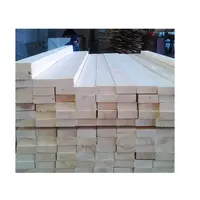
Wholesale Supply Of Soundproof Panels With Discounted Prices: White Pine Wood Logs Wood Panels Furniture Construction Pine


High Quality Wholesale Custom Teak Wood Logs Pine And Red Cherry Woods Massive Forest Teak Wood Logs Wholesale Prices























Navigating the intricacies of pine wood pricing can be as complex as the wood grain itself. With the U.S. South's vast pine timber reserves and the localized nature of timber markets, savvy buyers must understand the fluctuating inventory and regional supply-demand dynamics. This guide delves into the secrets of pine wood pricing, offering a comprehensive look at the factors influencing costs and how to make informed purchases on Alibaba.com. Whether you're a seasoned wood-user, a timberland investor, or a newcomer to the market, this article will equip you with the knowledge to source pine wood smartly and efficiently.

The U.S. South holds a significant volume of pine timber, with private timberland owners possessing billions of tons. The inventory is predominantly sawtimber, complemented by a substantial amount of pulpwood. Recent forecasts suggest a growth in pine inventory over the next decade, with variations across states. For instance, while some states may see a decline, others like Mississippi and Arkansas are expected to experience notable increases. This inventory fluctuation is crucial for understanding pine wood pricing in the market.
Moreover, timber markets operate on a local level, which means that regional analyses can be too broad to capture the nuances of supply and demand. For example, certain areas in Georgia may experience a tighter supply compared to their demand, unlike other regions with more abundant supplies. These local market dynamics are essential for wood-users and timberland investors to consider when making strategic decisions, as they directly impact pine wood pricing.
Alibaba.com showcases a diverse range of pine wood products, catering to various construction and manufacturing needs. Among the offerings, you can find solid wall wood panels in thicknesses like 3mm, 6mm, 9mm, 12mm, and 15mm, some of which are film faced, and others laminated with veneers such as white or red oak. The platform also lists pine wood finger joint boards, a product known for its stability and uniformity, made from pieces of pine lumber like Radiata Pine or Pinus Sylvestris.
For structural applications, LVL (Laminated Veneer Lumber) timber is available, which is engineered for high strength and is often used in construction. This category includes sizes like 2x4x8 and beams designed for load-bearing purposes. Additionally, Alibaba.com provides a selection of plywood options, including those faced with pine wood veneer, suitable for both commercial and residential use.
The marketplace also features raw pine wood materials such as splicing solid wood boards and a variety of plywood lumber boards. For those looking for ready-to-use options, there are pre-treated timbers and anticorrosive lumber designed for construction and formwork. Moreover, customers can explore pine wood planks and timber, available in different grades and treatments, ensuring a fit for a wide range of projects.
Suppliers on Alibaba.com offer pine wood in various forms, including sawn lumbers, timber logs, and planks, with customization options to meet specific requirements. These pine wood products are suitable for making pallet furniture, construction engineering, and even eco-friendly building materials like bamboo board products. The assortment of pine wood on the platform is extensive, providing a comprehensive resource for buyers looking to source this versatile material.
Wood feedstock costs, particularly for products like pine wood, are a significant variable in manufacturing. Stumpage price, which is the fee paid to harvest trees, is subject to variation across different regions. This price fluctuation is influenced by several key factors that are critical to understand for anyone involved in the wood supply chain or considering pine wood purchases.
The factors affecting stumpage prices include the local wood basin's characteristics, with prices potentially differing even within small geographic areas. For instance, within a single state, prices may shift from county to county. These differences are amplified when comparing distinct regions, which may have unique species, log sizes, and harvesting practices.
A comprehensive analysis of timber sales data can reveal trends tied to specific variables that impact prices. These include the quality of the timber, weather conditions, tract size, and more. Understanding these factors is essential for assessing both short-term and long-term market risks and opportunities.

Navigating Alibaba.com for pine wood purchases involves understanding the variety of options available. The platform offers an extensive selection of pine wood products, including solid wood boards, sawn timber, and plywood in various types and sizes. Buyers can find pine wood suited for different applications, from construction planks to fine furniture lumber. The assortment includes finger joint board panels, Radiata pine plywood, LVL boards, and more, catering to diverse construction and design needs. When selecting pine wood, consider the specific type, such as solid pine furniture board or veneer plywood, to match the project's requirements.
To make an informed purchase, buyers should pay attention to the features of the pine wood listed, such as the dimensions, wood grade, and whether the wood is treated or untreated. Alibaba.com's listings provide detailed information about each product, allowing buyers to compare different types of pine wood and their suitability for various industries. For instance, the platform lists options like natural sawn timber, furniture quality lumber, and specialty woods for sauna construction, highlighting the diverse applications of pine wood.
The platform's user-friendly interface facilitates the search for pine wood by allowing buyers to filter results based on type, size, and other relevant features. This streamlined process helps buyers to efficiently find the pine wood that meets their specific needs and budget, ensuring a satisfactory purchasing experience.
When selecting pine wood for various projects, it's essential to understand its inherent features. Pine wood, a softwood from the Pinaceae family, is known for its versatility and ease of use. It typically presents a color gradient from reddish-yellow heartwood to yellowish or reddish-white sapwood, which may darken as it ages. The texture of pine can vary, often showing a striped or wavy grain pattern, with a medium texture and closed grain that facilitates easy cutting, nailing, and finishing.
The physical properties of pine wood include a balance of strength, durability, and elasticity, making it suitable for a range of applications. However, pine's natural resistance to decay and rot is not particularly strong, which is why it is often pressure treated for enhanced durability, especially for outdoor use. When considering pine wood for purchase, pay attention to these characteristics to ensure the material meets the specific requirements of your project.
Pine timber serves a multitude of applications across various industries, showcasing its versatility as a building and decorative material. Commonly utilized in the construction of cabinetry, furniture, and panelling, pine wood's aesthetic appeal is evident in both residential and commercial spaces. Its structural applications extend to window frames, roofing, and flooring, underlining its strength and durability. In addition to construction, pine wood plays a significant role in the paper production industry, contributing to the manufacture of paper products. The wood's by-products, such as rosin and turpentine, are also valuable for their industrial uses. Furthermore, pine nuts, harvested from certain pine species, represent an edible and commercially significant aspect of the wood's versatility. The wood's adaptability is further demonstrated in its use for crafting toys, poles, sleepers, and posts, as well as in landscaping and mining timbers. This wide-ranging utility makes pine timber a resourceful material in various sectors, from domestic to industrial applications.

Pine wood, recognized for its durability and strength, is a versatile material suitable for various applications, from construction to indoor and outdoor decoration. Sourcing pine wood offers the advantage of a diverse selection, enabling buyers to find the exact type of pine wood needed for their specific projects. An extensive network of suppliers ensures that buyers can access a wide range of pine wood products, including finger jointed boards, laminated panels, and sawn timber, tailored to different requirements and preferences.
The global reach allows for the procurement of pine wood from different regions, offering a spectrum of grades and price points. This variety ensures that businesses can find pine wood that fits their budget while meeting their quality standards. The user-friendly interface simplifies the process of comparing different pine wood options, making it easier for buyers to make informed decisions based on factors such as material features, applications, and supplier reliability.
Furthermore, the platform provides a convenient and efficient purchasing experience, with detailed product descriptions and supplier profiles. This transparency helps buyers understand the source and quality of the pine wood, contributing to a more trustworthy and reliable sourcing process. By leveraging the platform, businesses can benefit from competitive pricing, a broad selection of products, and the ability to connect directly with manufacturers and wholesalers for customized pine wood solutions.
When buying pine wood, it's crucial to assess suppliers' badges carefully. Look for badges such as Gold, Verified, or Trade Assurance, which indicate that the supplier is a registered company and can be trusted. This helps in ensuring the authenticity of the pine wood being purchased.
Be cautious of the pricing. If the cost of pine wood seems unusually low, it could be a sign of counterfeit or inferior quality products. A price that is significantly below the market average should be a red flag and may warrant further investigation into the supplier's credibility.
Always opt for verified payment methods when purchasing pine wood. Secure payment options like Trade Assurance, which not only facilitates a secure transaction but also offers a level of protection for your purchase. Avoid methods that are not verified by the platform as they may increase the risk of fraudulent activities.
By following these tips, buyers can navigate more effectively, ensuring a safer purchasing experience while sourcing pine wood. It's about being vigilant and using the platform's tools to your advantage to make informed and secure transactions.
In conclusion, understanding pine wood pricing is a multifaceted endeavor that requires insight into market inventories, local supply-demand dynamics, and the various factors influencing stumpage prices. The platform stands out as a valuable resource for buyers, offering a vast selection of pine wood products suitable for a myriad of applications across different industries. By considering the key features of pine wood, assessing the advantages of sourcing, and adhering to savvy buying tips, purchasers can navigate the market with confidence. Armed with the knowledge from this guide, buyers are well-equipped to make strategic decisions that align with their project requirements and budget constraints, ensuring a successful procurement of this versatile and essential material.